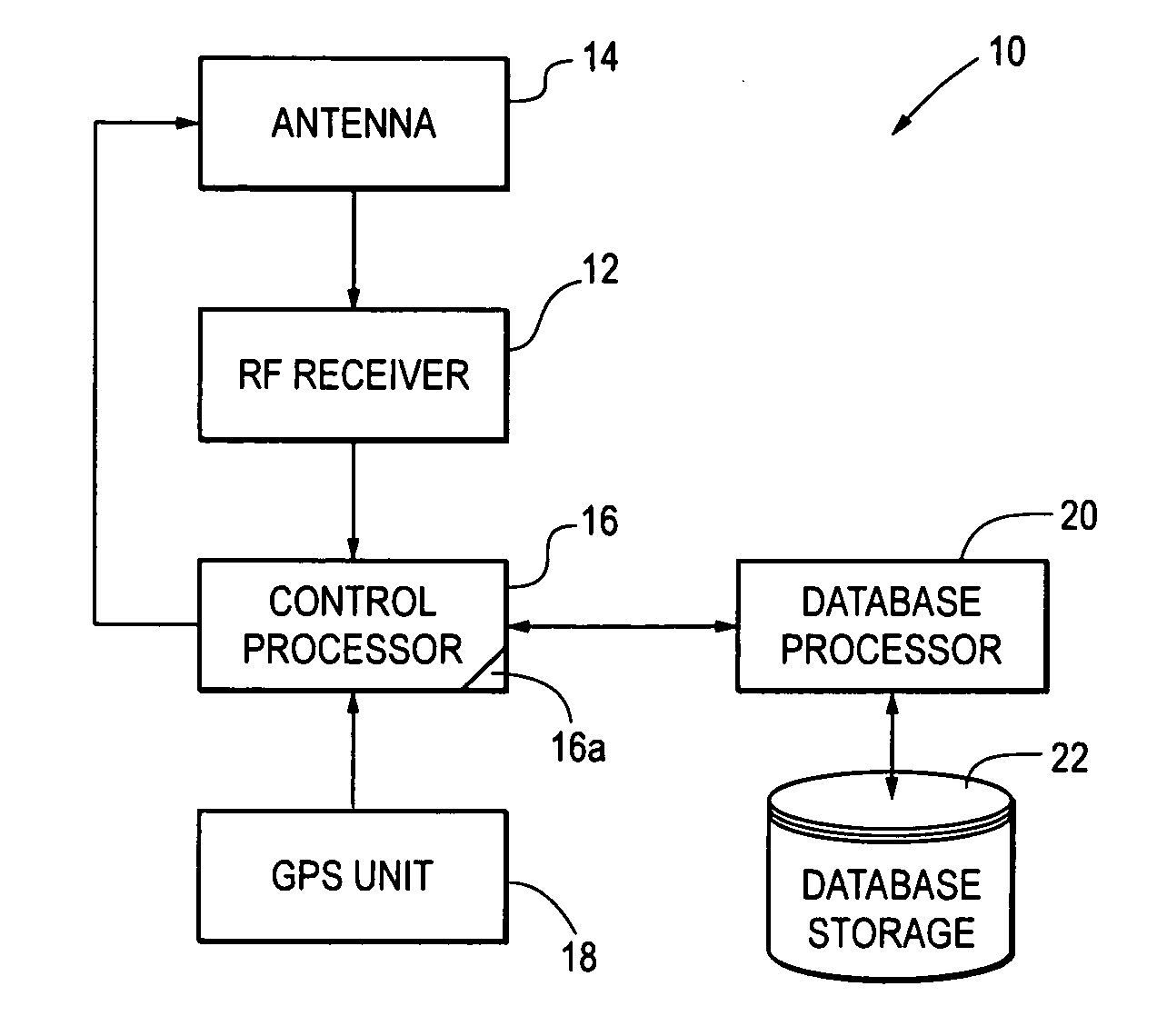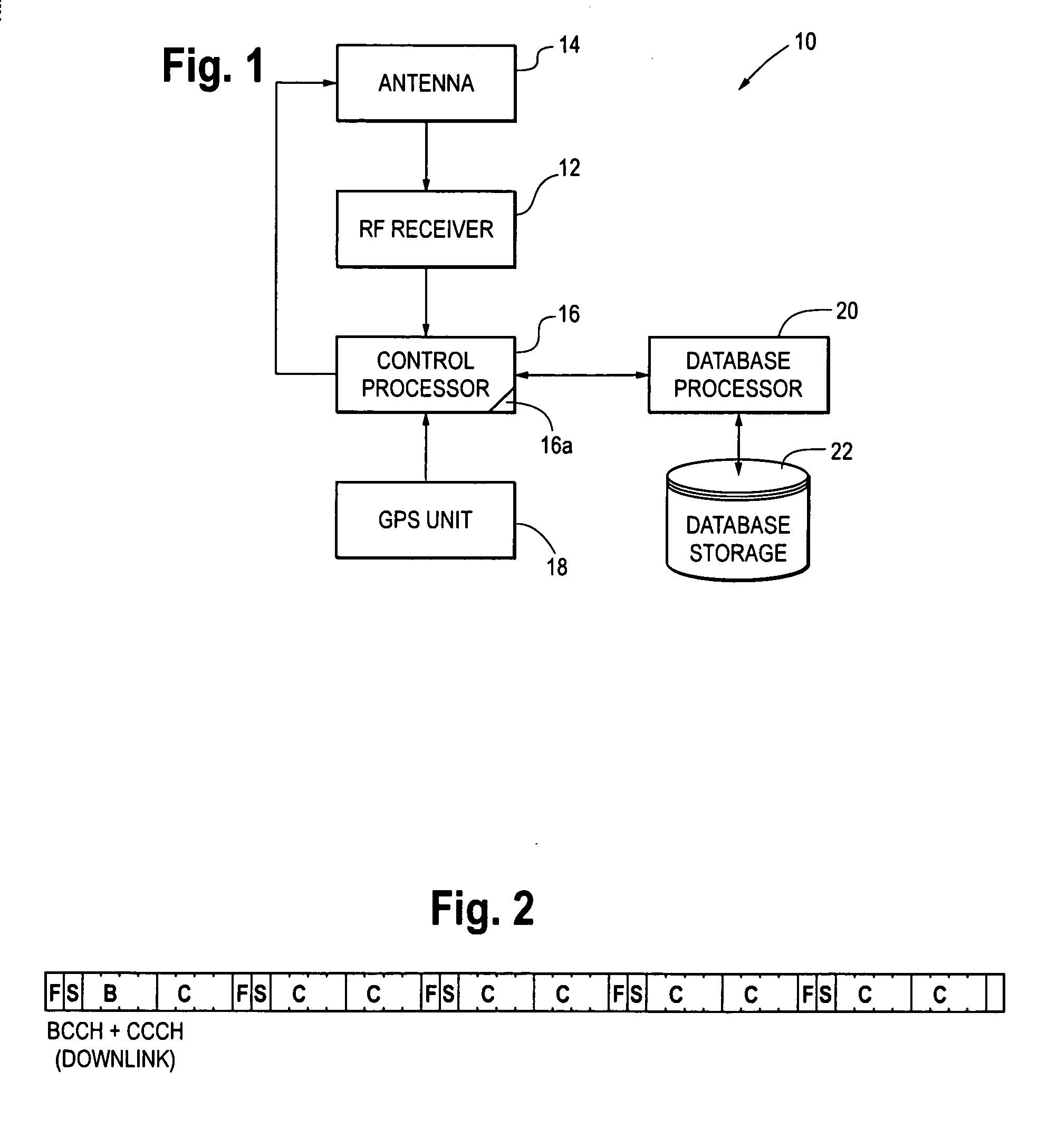Use of SCH bursts for co-channel interference measurements
- Summary
- Abstract
- Description
- Claims
- Application Information
AI Technical Summary
Problems solved by technology
Method used
Image
Examples
Embodiment Construction
[0024] While embodiments of this invention can take many different forms, specific embodiments thereof are shown in the drawings and will be described herein in detail with the understanding that the present disclosure is to be considered as an exemplification of the principles of the invention, as well as the best mode of practicing same, and is not intended to limit the invention to the specific embodiment illustrated.
[0025] The present invention may be embodied as a method for determining individual levels of signal components corresponding to control channels or as a device that implements the method.
[0026] Levels of signal components transmitted by each of the co-channel base stations in the area under test in a wireless network are measured and associated with the appropriate (originating) base station in presence of co-channel and adjacent-channel interference. This is done in a fully functional network without interrupting service. Embodiments of the present invention inco...
PUM
 Login to View More
Login to View More Abstract
Description
Claims
Application Information
 Login to View More
Login to View More - R&D
- Intellectual Property
- Life Sciences
- Materials
- Tech Scout
- Unparalleled Data Quality
- Higher Quality Content
- 60% Fewer Hallucinations
Browse by: Latest US Patents, China's latest patents, Technical Efficacy Thesaurus, Application Domain, Technology Topic, Popular Technical Reports.
© 2025 PatSnap. All rights reserved.Legal|Privacy policy|Modern Slavery Act Transparency Statement|Sitemap|About US| Contact US: help@patsnap.com



